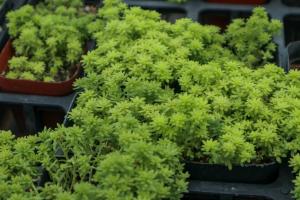Introduction
Evergreen trees are valued for their ability to retain their leaves year-round, making them ideal for creating living fences and windbreaks. When planting evergreen trees, it is crucial to get the planting depth right to support their growth and longevity. In this article, we’ll explore how deep one should plant evergreen trees.
Why Planting Depth Matters
Planting depth can have a significant impact on the growth and establishment of trees. When a tree is planted too shallow, its roots may not have enough room to spread out, making it more susceptible to wind damage and uprooting. On the other hand, planting a tree too deep can limit its access to oxygen and nutrients, resulting in stunted growth and poor health.
Factors to Consider
Several factors play a role in determining the ideal planting depth for evergreen trees. The first is the species of tree being planted. Some evergreen trees, such as cedars and spruces, have shallow roots and require more topsoil to be added to the planting hole. Others, like pine trees, have taproots that need to be planted deeper to avoid drying out.
Soil type is another critical factor to consider. Heavy clay soils should be avoided, as they can retain too much water and cause root rot in evergreen trees. Sandy soils, on the other hand, drain too quickly and may require additional irrigation to keep the evergreen trees adequately hydrated.
Finally, planting depth should also take into consideration the climate and wind exposure. Trees planted in areas with high winds or cold temperatures should be planted deeper to prevent damage from weather extremes.
Recommended Planting Depth
Generally, the planting depth for evergreen trees ranges from 2 to 3 times the diameter of the root ball, or the size of the pot the tree was originally grown in. For example, if the root ball is 12 inches in diameter, the planting hole should be 24 to 36 inches deep.
It is essential to note that planting depth should be measured from the top of the root ball, not the bottom. The top of the root ball should be level with or slightly above the surrounding soil.
Once the tree is planted, it is crucial to create a berm or saucer around the planting hole to redirect water towards the tree’s roots. This will promote healthy growth and prevent root rot and other moisture-related issues.
Conclusion
Proper planting depth is critical for the growth and establishment of evergreen trees. While there are several factors to consider when determining the appropriate depth, generally, planting 2 to 3 times the diameter of the root ball is recommended. By choosing the right planting depth and creating a well-draining environment, you can help your evergreen trees thrive for years to come.

 how many times do yo...
how many times do yo... how many planted tre...
how many planted tre... how many pine trees ...
how many pine trees ... how many pecan trees...
how many pecan trees... how many plants comp...
how many plants comp... how many plants can ...
how many plants can ... how many plants and ...
how many plants and ... how many pepper plan...
how many pepper plan...































